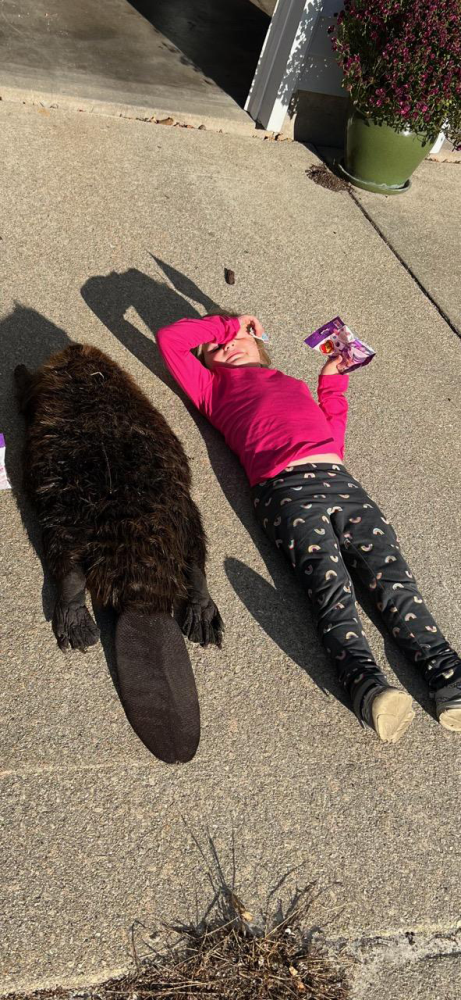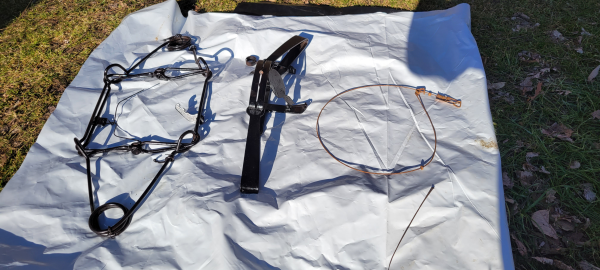Looking to Get Outside During Winter?
JOHN CLER
Give beaver trapping a try
The key to staying happy and healthy during long, cold Wisconsin winters is finding a way to enjoy the season. Ice fishing, bunny hunting and predator hunting are among the choices for enjoying the outdoors during the winter. Beaver trapping is another activity that can supply fun, exercise, fur and food for the enterprising outdoor enthusiast. You will also learn much while doing so.
The first thing you will need is a trapping license. If you have never purchased one, you will need to take a Trapper Education Course. This course is a cooperative effort of the Wisconsin Department of Natural Resources and the Wisconsin Trappers Association. The course is offered in several formats, including in-person, on-line and correspondence. You will receive your first trapping license upon completion of the course. Class information can be found on the Department of Natural Resources website.

Four year old Gwendolyn Mancini, of Monroe, stretches out next to a 60 lb. beaver that her dad, Mike, caught.

Beaver trap types : Body gripper (L), leg hold trap (M) and snare (R)
You will need traps, as well. These can be expensive, as beavers are big and require large traps. Vendors can be located on-line. Many offer used traps at a substantial savings. There are three types of traps used to catch beavers.
Body gripping traps, sometimes called conibears, are like big mouse traps, as they are meant to catch animals behind the head. They are placed where animals are likely to swim or they can be baited. They dispatch animals quickly.
Foot hold traps are placed where beavers are likely to step. These must be set so that the animal may get to deep water and not return when caught. The animal drowns in short order. Scents or bait can be used to persuade animals to step into the trap.
Snares are made of cable with a sliding lock. These are placed where the animals is expected to swim. The lock allows the snare loop to tighten around the animal and hold it underwater. Snares are inexpensive and are best used under the ice.
Beavers remain active under the ice during winter. They store a pile of sticks near their den, or lodge, as a food source for their time locked under the ice. They will leave each day to cut several of these sticks and return to the lodge to eat the bark. Beavers apply oil to their thick fur to repel the cold water, allowing them remain warm. The daily activity of a family of beavers near the lodge prevents the ice from becoming as thick as it is elsewhere. Care needs to be taken when approaching a lodge on the ice.
There are beavers in every county of the state. They are numerous on both private and public land. Fur prices are currently very low, resulting on very little trapping pressure. Beavers are awesome animals, but have a tendency of wearing out their welcome by cutting trees and corn stalks. Permission to trap beavers on private land is fairly easy to get.
Beavers are open skinned. This means that the first incision is from tail to chin along the middle of the belly. There are lots of videos available on-line that demonstrate the skinning of beavers and fleshing of the hides.
Beaver fur is among the warmest to be found. There are several tanneries that will tan hides for trappers. There are also places that will make clothing items from these tanned furs. Beaver hides are very tough, meaning that anything made from beaver fur will last a long time.
Beaver meat is an overlooked source of protein. The meat is tender and resembles beef in flavor and texture. The backstraps and back legs provide the majority of the meat on a carcass. Fat should be removed prior to cooking.
Check trapping regulations for season dates and other legalities in your part of the Badger State. Beaver trapping is a lot of work and is guaranteed to keep you active, warm and learning on any cold winter day.






